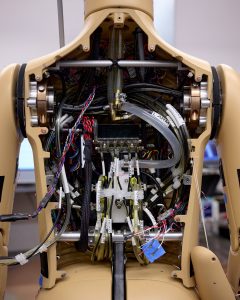Wind Energy y la Ley Obscure de 1920
2 min read
The US Has Big Plans for Wind Energy—but an Obscure 1920s Law Is Getting in the Way
Wind energy has become a crucial part of the United States’ plan to transition to a more sustainable and clean energy future. However, despite its potential and the ambitious goals set by the government, an obscure law from the 1920s is posing a significant challenge.
The law in question is the Federal Power Act of 1920. Initially designed to regulate hydroelectric power, it unintentionally hinders the development and expansion of wind energy projects across the country. The law gives the Federal Energy Regulatory Commission (FERC) authority over the interstate transmission of electricity, including the ability to grant permits for transmission lines.
While the FERC has broad jurisdiction over many aspects of the energy sector, the issue arises when it comes to approving transmission lines that cross state lines. Due to the decentralized nature of wind energy, many projects require connecting transmission lines across multiple states to efficiently transport electricity from windy regions to population centers.
Unfortunately, the Federal Power Act imposes strict regulatory requirements and delays on interstate transmission projects, which significantly impedes the development of large-scale wind farms. This creates a lengthy and cumbersome process for obtaining permits and ultimately dampens investments in this renewable energy sector.
The US government recognizes the urgency of harnessing wind energy to combat climate change and meet clean energy targets. To overcome the regulatory barriers, several proposals have been put forth to amend or exempt wind energy projects from the Federal Power Act’s provisions.
Efforts are underway to streamline the permitting process for interstate transmission lines, expedite reviews, and provide necessary exemptions. It is essential to strike a balance that ensures environmental protection while also enabling the growth of wind energy infrastructure.
Overcoming the obstacles posed by the outdated 1920s law is vital for the realization of the US’s big plans for wind energy. Wind farms have the potential to create thousands of jobs, reduce greenhouse gas emissions, and establish a more resilient and sustainable energy grid.
As policymakers, businesses, and environmentalists work together, the hope is to modernize the regulatory framework to accommodate the unique challenges and opportunities presented by wind energy. By doing so, the US can continue its transition towards a greener and more sustainable future.





